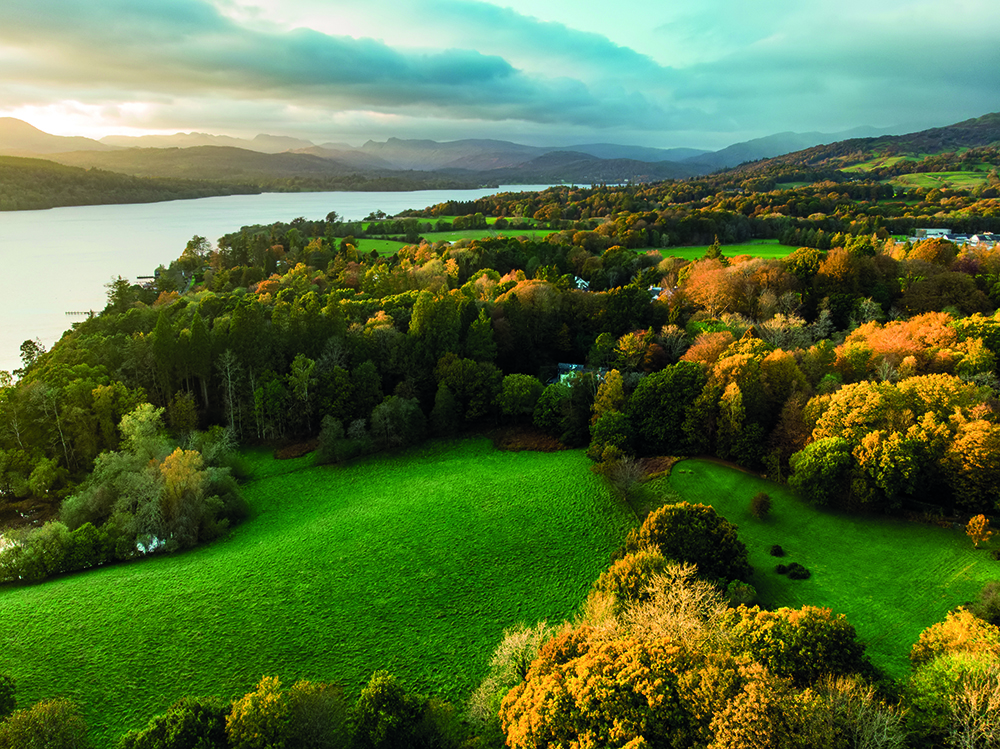
Could trees and woodlands be an opportunity for you? On this page we explain the opportunities available to you for woodland creation and how to take steps to implement. From practical information, to advice on funding and who to contact next.
Atlantic rainforests, ancient trees and traditional wood pastures help make the Lake District one of the most distinctive landscapes in the world.
But trees and woodlands provide so much more than character and visual appeal. For those working the land, trees and woodlands offer a host of benefits including shade and shelter for livestock, improved soils, crop yields and farm diversification. In the right location, trees and woodlands can increase farm productivity and income through agroforestry and timber for sale or use on farms.
And, of course, woodland ecosystems reduce our climate impact by locking up carbon, providing sustainable building and craft products and wood fuel for energy and heating.
Further afield, local communities benefit from reduced flooding risk, opportunities for employment and places to enjoy the great outdoors for their health and wellbeing. Our Atlantic rainforests, dripping with lush mosses, lichens and ferns, support an enormous wealth of wildlife.
It's important to establish the right types of new trees and woodlands in the right places, and it is worth taking the time to plan this early on.
The Lake District National Park Partnership's ambition is to increase woodland cover from 13% to at least 17% to contribute to the Government's legally binding target for tree and woodland cover in England of 16.5% by 2050. This means creating an average of over 200ha of new wood habitats per year - from woodland and forests to wood pasture, scrub to hedgerows and individual trees.
By expanding and linking up existing woody habitats, wildlife can move to colorise new areas and adapt to a changing climate. Diverse mixtures of habitat types (for example mixtures of trees, scrub, grassland and heath) are also great because they provide shelter and a wide range of food all in the same place. While signs such as bracken can indicate areas where trees will grow well, we also need to understand where trees are not appropriate, for example, on deep peat or priority habitats such as species rich grasslands.
You also need to be mindful of the impact of deer and livestock on establishing trees and consider management (such as fencing) for the duration of your project.
Only 13% of the Lake District is woodland. We want to boost this figure by expanding, linking and enhancing our most important habitats, which include Atlantic Rainforest and wood pastures with some of the most valuable ancient trees in Europe. They are a part of our heritage and culture, absorb carbon, clean our water and reduce flooding.
The Cumbria Local Nature Recovery Strategy (LNRS) outlines some of the types of woody habitats that might be appropriate for the Lake District. See online resources for further information.
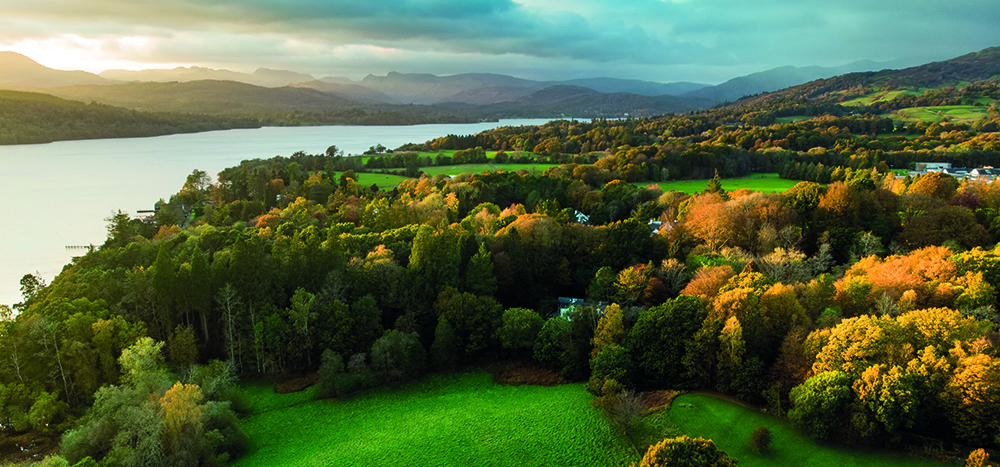
At least 20% canopy cover over 5m in height. Can have multiple objectives, including timber and biodiversity.
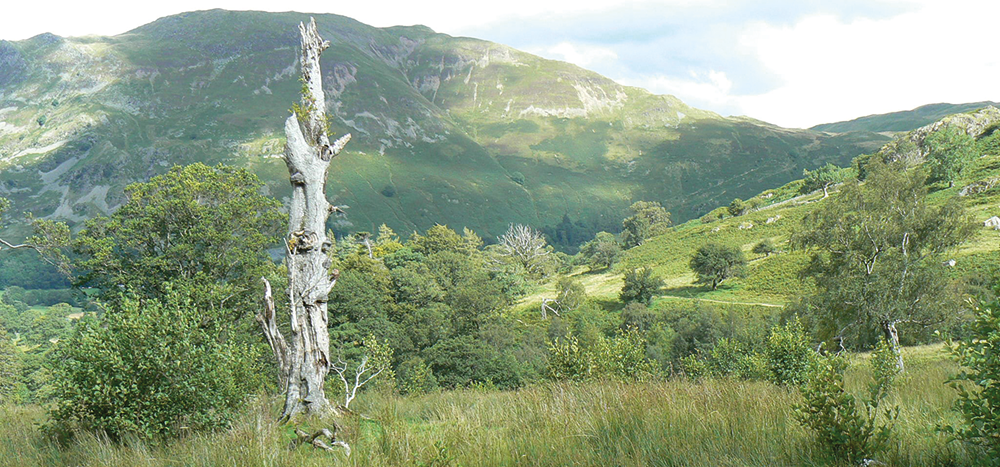
Wood pasture is grazing land with standing trees (often veteran) providing shelter and shade for livestock. Often alongside other high-value habitats.
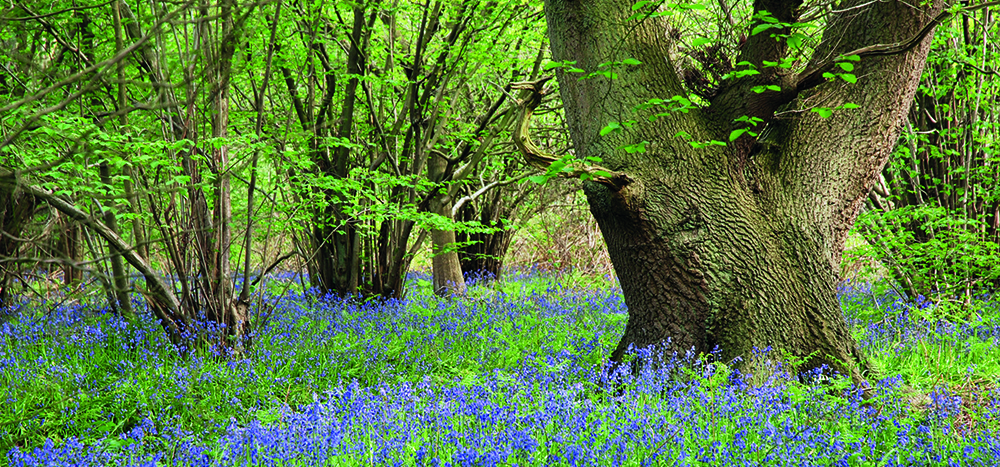
An ancient form of managing woodland. Trees are cut at regular intervals to provide timber for a variety of products.
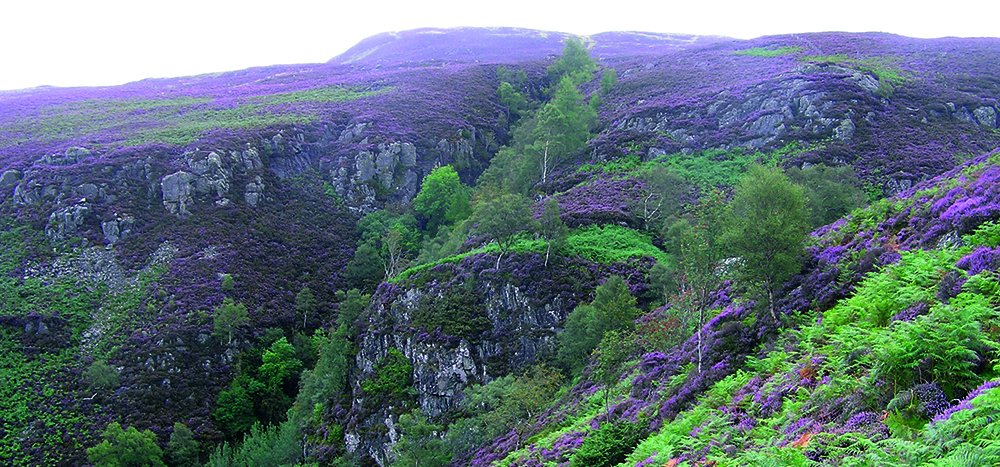
Generally smaller growing trees such as hawthorn and willow that provide high biodiversity value, especially when mixed with other habitats.
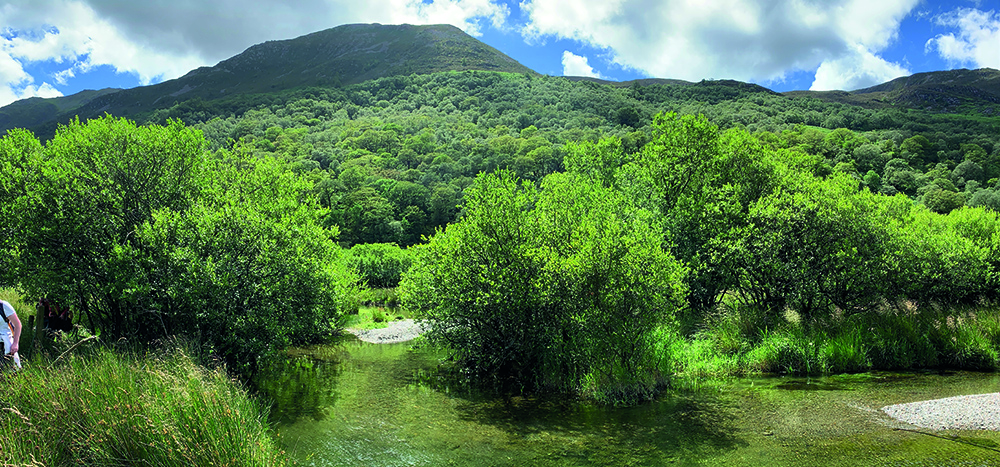
Found on wet soils and alongside watercourses. Can assist in improving water quality and management.
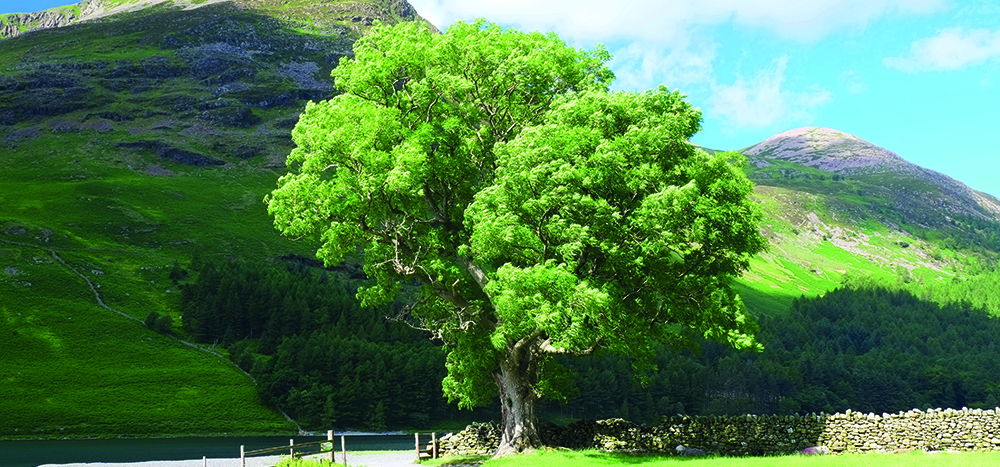
Provide shelter and shade for livestock and homes for wildlife such as birds, bats, insects, flowers, ferns, fungi, lichens and mosses.
There is a significant amount of support available to landowners in the form of funding, grant aid and advice. Advisors can provide you with the expertise and guidance to assess your project against objectives at each stage of the design process. They can also help you identify the right funding for your project and how to apply, including regulatory approval. Some of the tree and woodland establishment funding schemes are listed below.
| Funding | Min Size | Description |
|---|---|---|
| Woodland Creation Planning Grant (WCPG) - Forestry Commission | 5ha but can be smaller blocks | Funds the production of a UKFS compliant plan, including contribution to paying for surveys. |
| The England Woodland Creation Offer (EWCO) - Forestry Commission | Minimum 1ha | Funds planting and natural colonisation (plus 100% of required capital items and maintenance payments for 10 years). Additional contributions to deliver public benefits such as access, water quality and nature recovery. |
| Countryside Stewardship Higher Tier - Defra/Natural England | N/A | Annual area and capital payments for tree planting, fencing and guards to create scrub, wood pasture, orchards and hedgerows. |
| Landscape Recovery Scheme - Defra/Natural England | 500ha but not necessarily all woodland | Bespoke projects for significant nature restoration at the landscape scale. Includes funding for a project development phase. |
| MOREwoods - Woodland Trust | All types, minimum 500 trees/0.5ha | Subsidised supply of trees and guards for woodland of 0.5ha+. |
Eligible woodland creation schemes can be registered under the Woodland Carbon Code to provide access to fully regulated carbon markets to sell sequestered carbon, including to the UK government via the Woodland Carbon Guarantee Scheme.
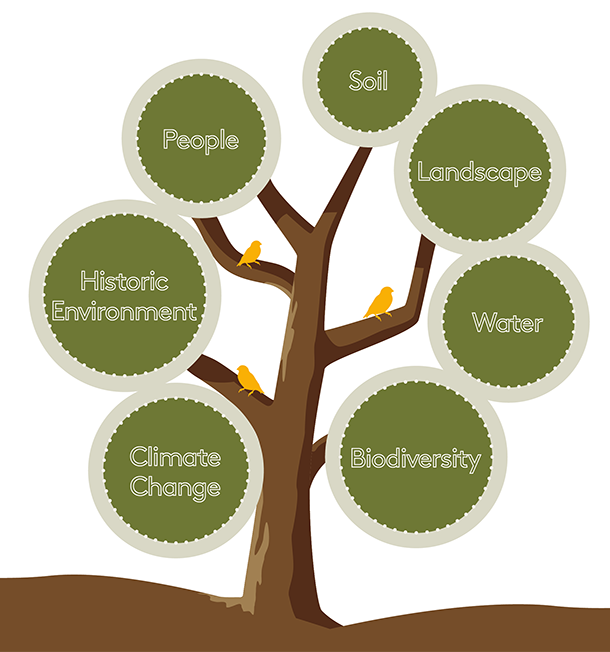
As a National Park and World Heritage Site, it is vital all woodland creation and tree establishment respects the existing landscape of the Lake District. There is also wildlife legislation and other national standards and regulations which need to be adhered to, including the United Kingdom Forestry Standard (UKFS) and Environmental Impact Assessment (EIA) Regulations. You can get a taste of the process in the section overleaf and find out more by visiting our online resources.
Advisors are available from several organisations to help guide you through these requirements and make sure your project complies with any regulations as well as offering advice and support on surveys, engaging contractors and sourcing plants from nurseries. They can also advise on how to look after your trees and woodlands in the long-term, which is essential for them to reach their full potential.
Remember, the important things is to get advice early on in your project development. We're all working towards the same thing - a beautiful, healthy Lake District, with the right trees in the right places, doing the right thing for the people and wildlife who live there.
Successful tree establishment and woodland creation takes planning and preparation and as trees can live for hundreds of years, it is worth getting it right, especially in a sensitive landscape and environment such as the Lake District. If applying for a grant, this could take five months or more, so start early with planning and engaging organisations that are able to help.
Establishing trees and woodlands can achieve multiple objectives such as growing timber, providing wildlife habitats and areas for recreation and creating shelter. Decide what you want to achieve on your land and see the section on 'Tree and Woodland cover types' for ideas on how trees might make this possible.
Once you have decided on your objectives, get your ideas down on a map and consider what factors may be important - e.g. existing habitats, infrastructure and archaeology.

Engage with stakeholders who may have an interest in the project and/or could provide useful information. It is recommended to engage Natural England and the Forestry Commission who could also support with grants and advice.

Some sites may require surveys for plants, wildlife or historic features. These can add delays to the timeline if the survey seasonal window is missed and should be prioritised.

Following outcomes from engagement and surveys, finalise your plan to support any grant application. Get quotes for plants, materials and contractors, if needed.

Grant application may involve regulatory approvals (e.g. EIA screening for woodland creation). Natural England and Forestry Commission staff will advise.

Once grants are approved, secure plants, materials and contractors where needed (e.g. cultivating, fencing, track building).
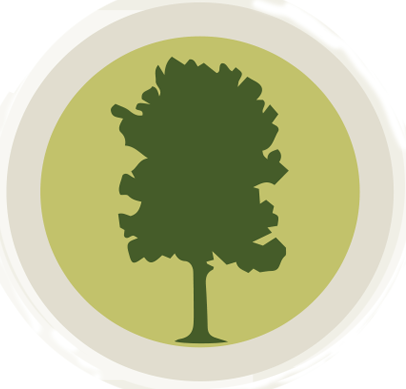
To ensure tree and woodland establishment is successful, it is essential to plan carefully, not only for initial establishment, but for ongoing maintenance and replacement of planted trees, boundaries, livestock exclusion and deer management.
There are additional resources and guidance available. These pages are regularly updated to include all of the latest information about grant aid, policy and regulations. If you are a tenant, you should speak to your landlord at an early stage. Not all tenancies preclude woodland creation or tree establishment but may need some renegotiation or clarification before doing the work.